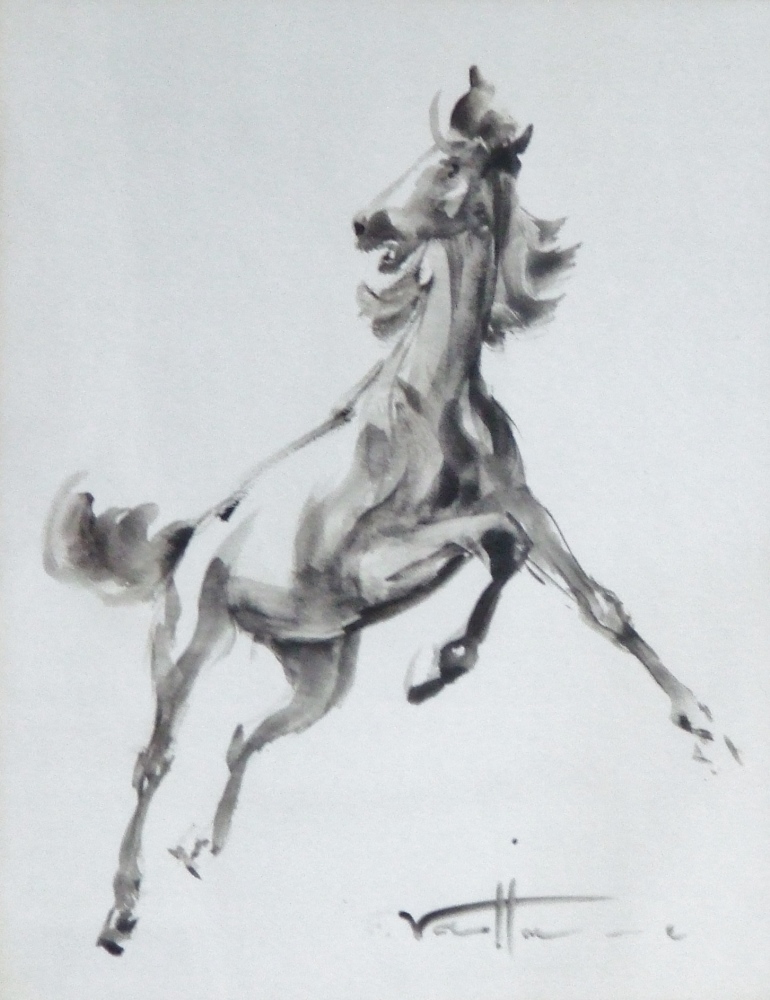Ink wash on paper by Fernand VanHamme – Camarque Horse, 1970
Original artwork on paper by Fernand VanHamme: Horse circa 1970. (Cheval, Camargue, France)
Ink wash on paper signed on lower right.
Dimensions: 25 x 20 cm – With frame: 37 x 32 cm
Price: *CAD (Canadian Dollars) – For more information on artist or for price, shipping and other details contact the gallery
Clic here to see more watercolors and ink washes >>
Hypersensitive painter of apocalyptic hose rides, rough seas and visionary scenes, unknown worlds where human passions give free rein.
Fernand VANHAMME (1911 – 1976)
He studied at the Academies of Brussels and Saint-Josse-ten-Noode. He frequented the art workshops of L’Effort and la Patte du Dindon (Paw of the Turkey). He practice a tormented painting, very baroque, who’s fantastic comes from the unconscious. Social satire was also explored in the 1930s, but he distances him from this claiming attitude in the late 40’s.
In 1947 he moves and lives for more than twenty years in a forest of Île de France near Paris. He devotes himself above all to the illustrations of literary works, e.g. of Dante, Cervantes, Goethe, Poe and Ghelderode.
In the 1950s he was inspired, by impressions from Spain, from where paintings of Festivities in Seville, that he exhibited in 1958 in Brussels.
The 1960s are the most productive for his literary illustrations such as the illustrations of Thomas Mann’s the Chosen one (1962), Extraordinary Histories (1965) and Edgar Allan Poe’s Grotesque and Serious Stories (1966), Charles Baudelaire’s The Spleen of Paris (1967) and the Diaboliques of Jules-Amédée Barbey’s d’Aurevilly (1969).
The travels and explores the south of France. He undertakes finally to show beauty wherever it is in his work and finds rest by sublimating love and depicting women in drawings and paintings.
In the next decade he briefly flirts with abstraction, a completion with swarming compositions where always appear the fantastic reminiscences. Later he is inspired by religion and man on the road to eternity; in the late 70s his work becomes extremely sober and linear.
He is a painter of the Royal Court of Belgium and won the Prize of the National Fine Arts, Belgium in 1972.
Date:
January 24, 2022
See more artworks and bio of
Ink washes & Watercolor
